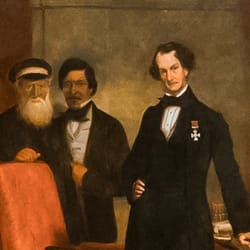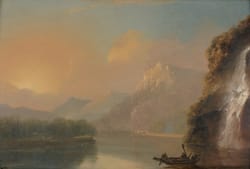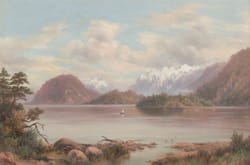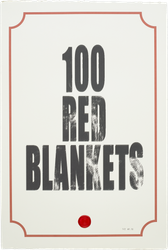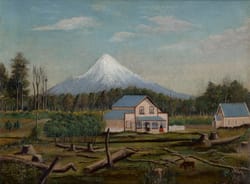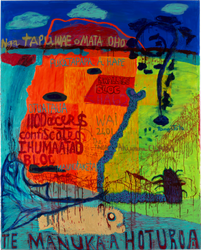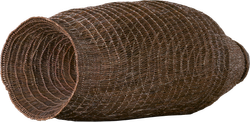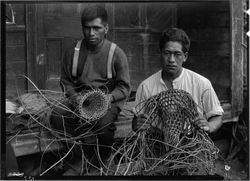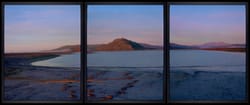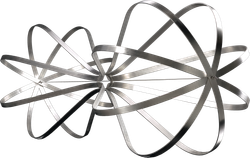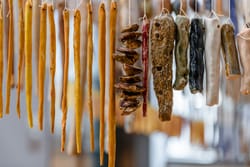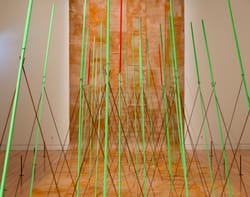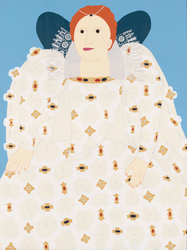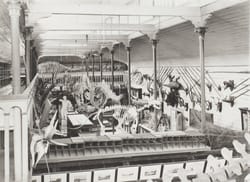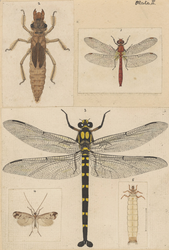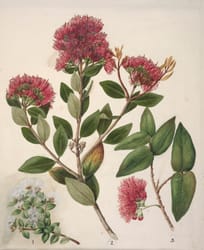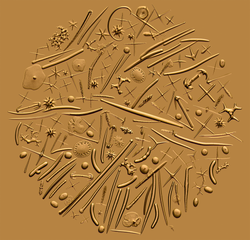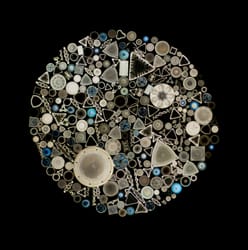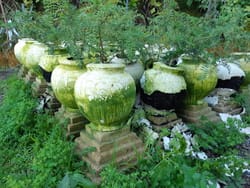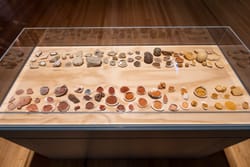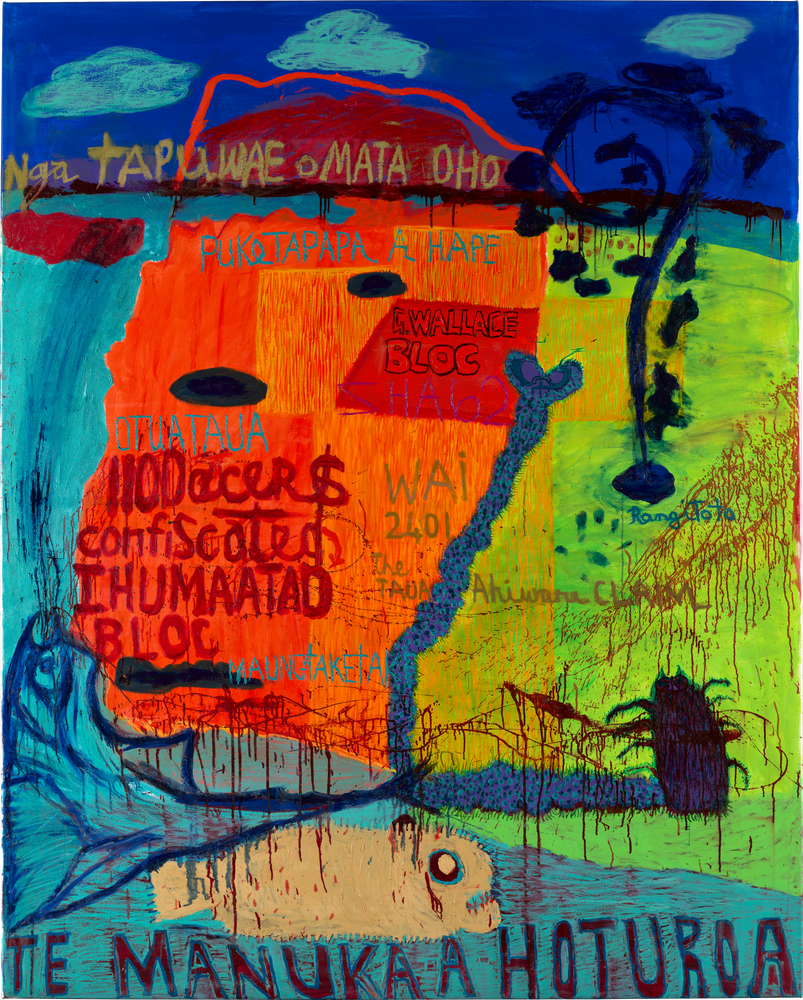
Close
MOANA
This is a landscape, but it changes perspectives and shifts things around. There's a horizon, but the land beneath tilts to something more like a map.
When you look at some of those earlier colonial landscapes, sometimes it feels like you can just walk into the frame. With a painting like this, it might be helpful to have a guide to show us the way in, like curator Megan Tamati-Quennell.
MEGAN
Emily Karaka has made this very bold, fluorescent-coloured painting. In this painting she's talking about Ihumātao, a pre-European early Māori settlement in Auckland that she has whakapapa (kin) connection to.
MOANA
Ihumātao as you’ll know is a place just across from what’s now Auckland Airport, and it really entered everyone’s consciousness when it was occupied by protesters in 2019.
MEGAN
Ihumātao has a long history. There are some of the only surviving stone fields used as gardens to produce food. It's an important place culturally, currently, and historically.
She also depicts internal iwi conflicts, the fractures within the iwi about Ihumātao, and the complication of contemporary iwi politics. So, this painting holds all those ideas – her work is never just scenery or landscape for its own sake.
MOANA
So, Emily Karaka's landscape is about the history and the geography and the whakapapa at that place, as well as the appearance of it.
MEGAN
She’s done all the research for the tribe. Even though her work kind of seems, like, naive and kind of light and fun, she's a cultural heavy hitter. She really is. She reads land in a different way, being of it and from it. All of her landscapes are about that.
MOANA
‘Nga Tapuwae o Mataoho’ … the sacred footprints of Mataoho. ‘Puke Tapapa a Hape’ … the hill where Hape arrived.
I think I'm starting to find my way in. How about you?
